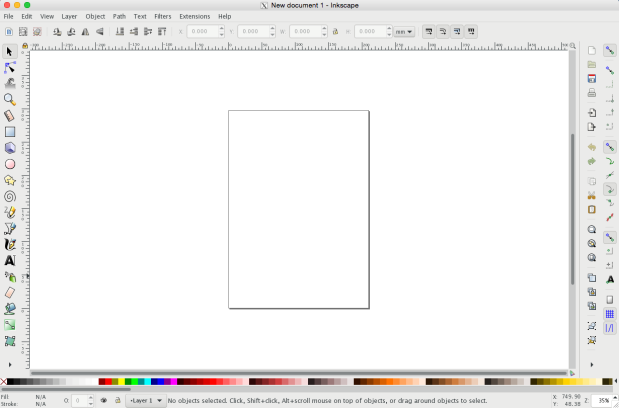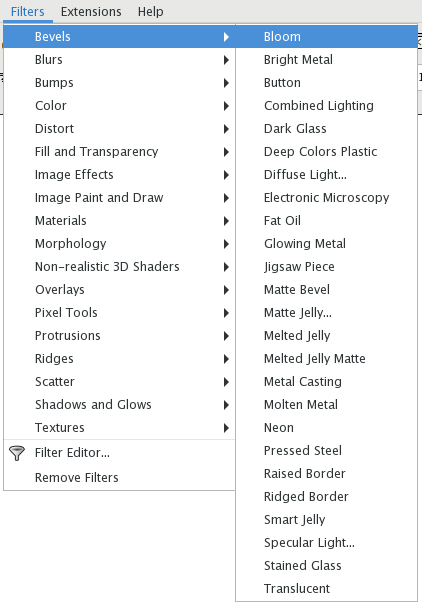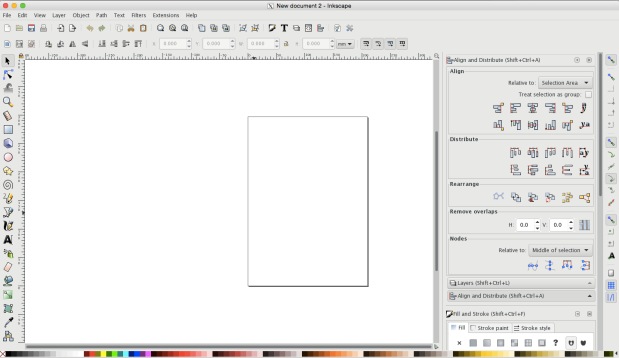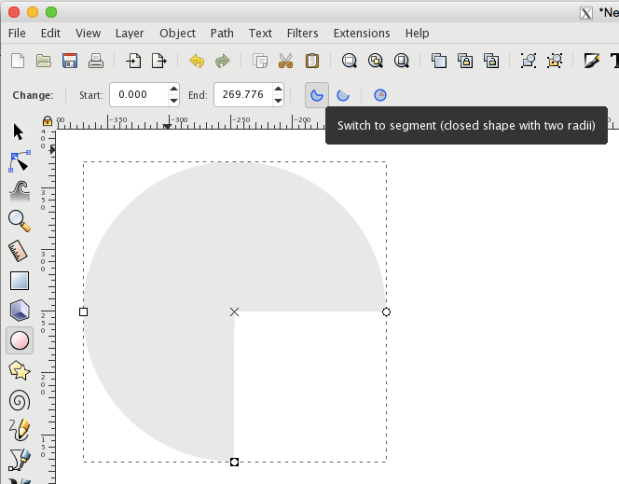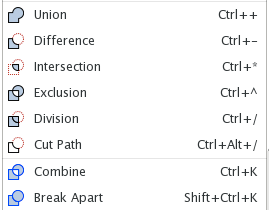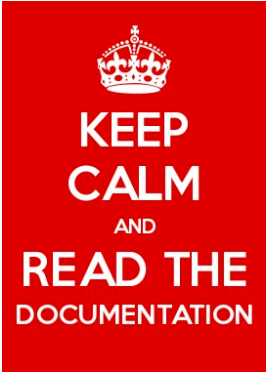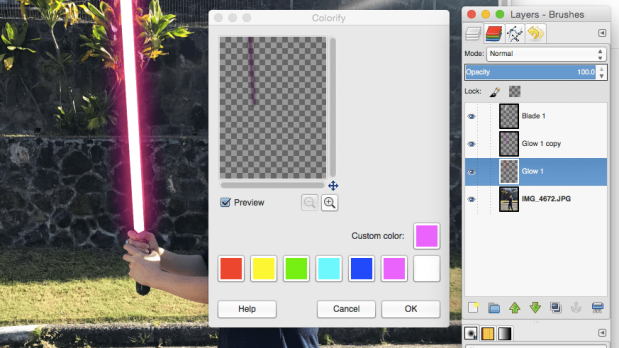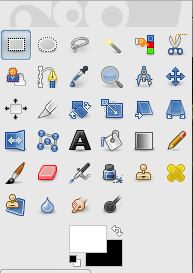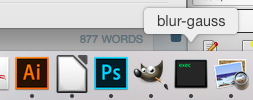 Creating great vectors and editing raster images are essential, but graphic design usually requires the added steps of putting them together into a layout. For print, we’d usually use something like Adobe InDesign, that’s made for placing images and text just so and preparing the files for printers. If you’re looking for a FOSS tool, the only tool that’s really worth mentioning is Scribus. Here are a few examples of items made with Scribus.
Creating great vectors and editing raster images are essential, but graphic design usually requires the added steps of putting them together into a layout. For print, we’d usually use something like Adobe InDesign, that’s made for placing images and text just so and preparing the files for printers. If you’re looking for a FOSS tool, the only tool that’s really worth mentioning is Scribus. Here are a few examples of items made with Scribus.
Resources
Installation – If you’re unaccustomed to open source projects, installation is usually not a one-click deal. Scribus, like many open source tools, sends you to a page of many links and options. Start on the Scribus site and you’ll want to download the stable branch, unless you’re interested in developing or in previewing the next release. Then you’ll need to pick from the correct download for the various operating systems. Because Linux has many distributions (aka modified versions), there appear to be many options, but PC and Mac are listed first thankfully!
Important for Mac users: You’ll need to install Ghostscript first, so read the documentation on installation for Mac.
Tutorials – Heres’s a pretty popular set of Scribus video tutorials to start you off. Mahalo to Kevin Pugh for putting them together. The Scribus user manual is wordy but provides a wealth of information.
Interface
Compared to InDesign, Scribus has a clean but slightly dated look. You’re greeted with the New Document window, which has all the same controls you get in InDesign, except for the ability to add columns. (You can add vertical and horizonal guides under Page > Manage Guides.) See the two below:

InDesign’s new document window
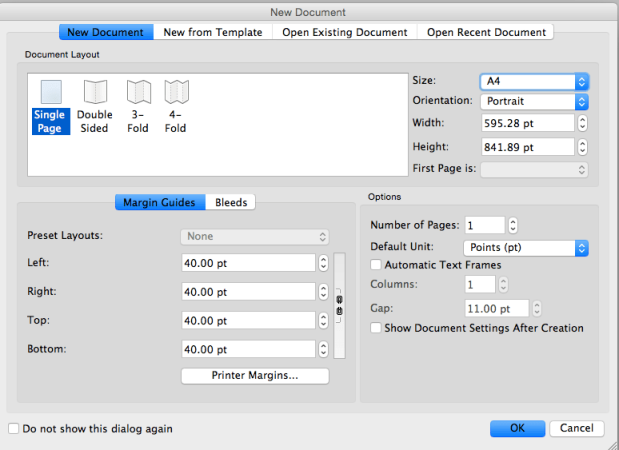
Scribus’ new document window.
The rest of the interface is pretty standard, similar in feel to Inkscape and GIMP. In Scribus, you can split up the icons into groups on the toolbar by dragging icons to create space between groups, see Kevin Pugh’s tutorial cued up. Again no palettes are open by default, so you’ll need to go in and open them up. These palettes are located under the “Window” menu, which is a good name for them because they don’t dock.

Drag tools to create groupings
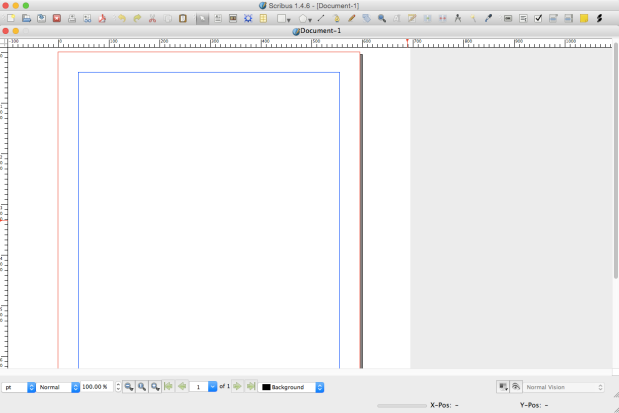
Interface looks more simple than InDesign’s
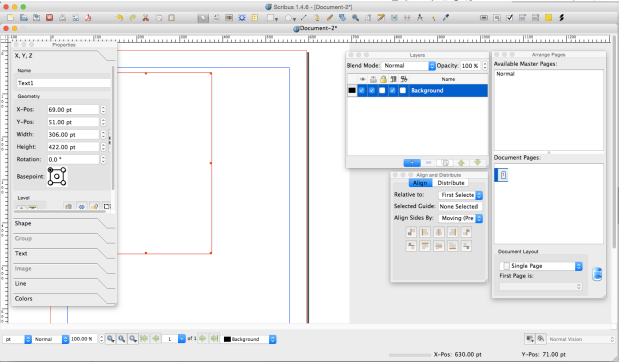
With palettes open, (Layers, Pages, Properties & Align) found under “Windows” menu. Palettes don’t dock.
Menu
Scribus’ menu and submenu feels disorienting, compared to InDesign.
- The Item menu does loosely align to “Object.”
- Insert is a way to insert items like shapes and textboxes, but InDesign you’d rely on the toolbars for this.
- Page loosely aligns to “Layout”
- InDesign has the table menu, a new feature set that Scribus doesn’t have (yet?). See Tables section below.

Scribus’ menu
InDesign’s menu
Working with Text
This is where Scribus feels very different from InDesign. Thus, Scribus separates working with text and images, while InDesign allows you to place either text or image. Scribus’ wiki on “Working with Text” is a must-read.
- Scribus actually recommends using what’s called the “Story Editor” to import content, which is a separate WYSIWYG window for editing the content. According to their wiki, they say this is useful for editing the text directly, especially for long passages that may be linked through the document. I can actually see their point on this.
- Scribus doesn’t support placing .DOCX files, but it does have support for .DOC which requires an extra step.
- Scribus supports a number of other files types, mostly open standards, such as .ODT (LibreOffice) and .txt (text file). This means you’ll likely need to find an open standard doc type to save to, that will import cleanly.

Strange UI, if you’re used to InDesign. However, it can be useful to edit long or linked blocks of text.
Tables
A notable missing feature in Scribus is the ability to do tables. The InDesign feature is quite robust allow you to design a custom table, including alternating row stroke/background color. Scribus’ wiki purports to have a table workaround, but it is basically creating a table from text boxes & shapes.
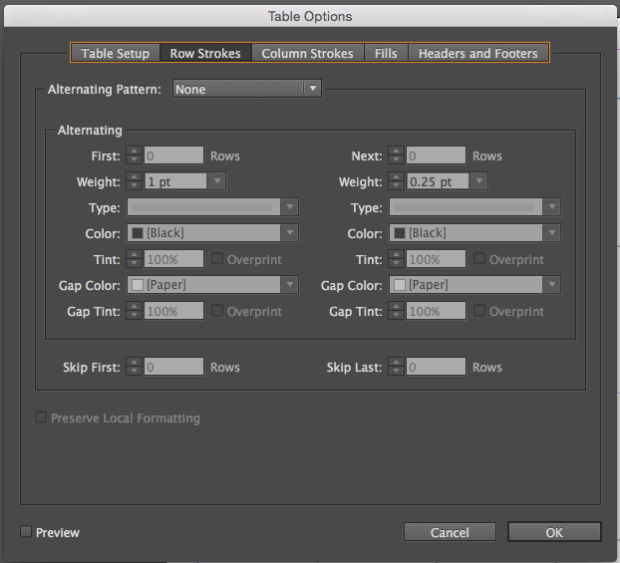
InDesign’s Table Options feature! Pretty slick! You won’t find this in Scribus yet, but you can build it the old-fashioned way, of course.
Compatibility
This is where Scribus has fallen short the most for me. According to this article by Techwalla, Scribus can import EPS files, exported out of InDesign. I have tried this and it hasn’t worked for me after multiple attempts and troubleshooting. There is a potential fix listed on this thread by mnawj, but the tool “Gsview” is only available on Windows so I couldn’t replicate the fix on my mac.
Adobe’s file formats are proprietary and they haven’t release the .INDD file type; therefore Scribus developers cannot program an import script. The issue is a prime example of why FOSS tools are advantageous. An open standard will not lock you into a particular tool or company. One lesser option is to edit the .EPS files in Inkscape as vectors. I was able to import an .EPS created in InDesign and edit it in Inkscape successfully.
Although file compatibility is a pain, it’s still worth considering a move to Scribus to take advantage of the no-cost, open standard file format option moving forward. Having files in Scribus’ .SLA format, you could even hire a programmer one day to open and convert your files, if Scribus went belly-up! I don’t see Adobe going away any time soon, but their subscription model will keep us paying them indefinitely!
Keyboard shortcuts, of course important to us designers, are not the same as InDesign. However, there is similarity with Inkscape and GIMP. Scribus does have support for the Apple/Command key (unlike Inkscape). You can also edit the keyboard shortcuts, as noted in the Scribus wiki.
Performance
I haven’t found any performance issues using Scribus! As I’ve mentioned on posts about GIMP and Inkscape, the tools don’t have Finder integration. Therefore, when you open a file, you get a Scribus “finder” window. The Scribus finder window doesn’t do search natively, so you really need to know where you’re file is or at least be able to navigate through your folder structure. Things like this can slow down your workflow, but definitely not a dealbreaker and may help you to become more organized with your files.

Scribus’ open window, doesn’t have the same features of Mac’s “Finder,” most notably Search.
Short of Professional, but Worthy Contender
Scribus seems a hair less polished than Inkscape and GIMP, but it is still an fine, more than adequate FOSS tool! I hesitate to recommend Scribus for professionals especially if you collaborate on designs with others and need to be able to import/edit InDesign files. If you work with large books or longer text files, it will be a pain to deal with in Inkscape and you’ll want something like InDesign.
However, if you don’t use InDesign much or work mostly on one-page posters, flyers and such that can be edited in Inkscape as an .EPS, it’s something you should consider.
This being said, I recommend keeping an eye out for future versions of Scribus or getting involved in the Scribus community to help shape future features. Scribus developers may just add the tools and features that would make it worth switching!
Review past part of the guide: Why FOSS?, Gimp, Inkscape
 In looking for a vector tool to rival
In looking for a vector tool to rival 